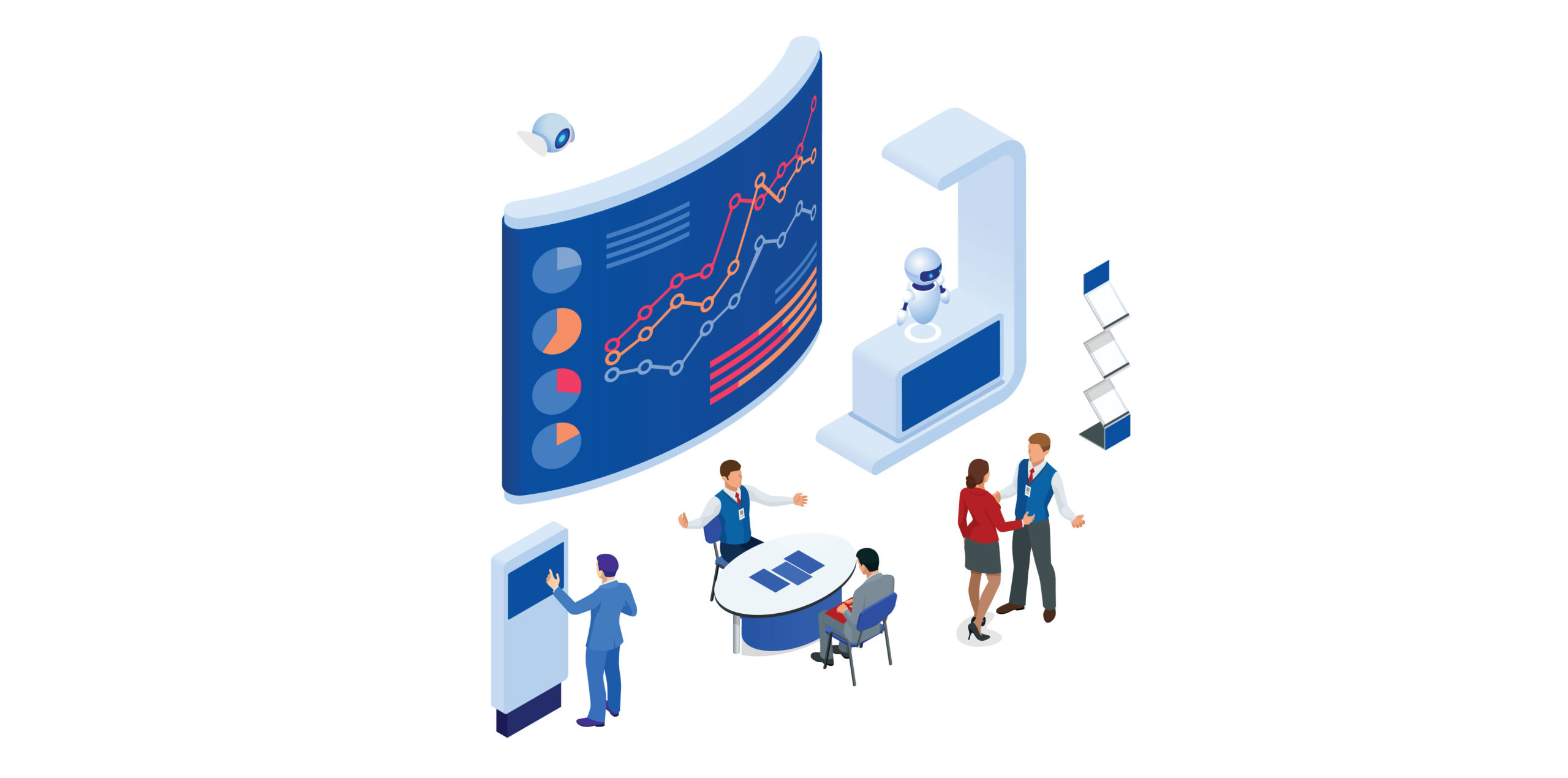The Healthcare Convention Marketing landscape is one that presents agencies with some of their greatest challenges, which when overcome, can provide the most richly rewarding results. Experiential marketing is unforgiving—having small windows of opportunity to capture your audience’s attention and deliver your message in a way that sticks and ensures that they “feel” the brand you represent. When combined with regulatory boundaries not found in most other industries and steep creative competition, it amounts to a single opportunity to make a positive, profound impression.
Viewed together, the gravity of these combined challenges transforms convention marketing into a space where near perfection is not only expected but relied upon to engage with healthcare professionals. The goal is to communicate highly scientific, easily understood meaningful stories so that the information is retained within an amazingly short amount of time.
Insights for Better Booth Experiences
One of the primary keys to successful conference initiatives is establishing an overall theme and vision for the space while understanding how this impacts everything within it.
Review the language that forms your client’s strategic imperatives and make sure that those terms translate into the way everything is communicated—from how HCPs should feel when they step across the invisible booth/aisle threshold, to the more explicit key messages embedded in digital interactive panels, applications, or animations.
The most valuable interactions that great conference booth designs foster are the ones between client representatives and the HCP. Even the most intuitive digital tactics benefit from the guidance and commentary supplied by representatives, who form the bridge between the tactics and the company’s strategic imperatives—whether on the commercial or medical affairs side of the booth.
Consider the use of third-party hosts to support your tactics—they can be trained on the technical details allowing client representatives to focus on fostering the business relationship with physicians. Being selective about who supports your booth initiatives will provide all stakeholders with the trust that your efforts will prove successful in the small window of time available.
When considering ways to maximize overall engagement, knowledge retention, and impressions, it is imperative to understand your audience. They are people and are inundated by marketing messaging every day. Like many of us, HCPs spend a large portion of their time between two worlds—staring down at their mobile devices or looking up at overwhelming messaging that surrounds them.
One way to differentiate is by using the counterintuitive strategy of scaling back and focusing on the balance of design. From a structural booth design perspective, think about how the selected materials, colors, and textures can provide a stark contrast to the competition. For example, if many of the surrounding booths are being designed with a futuristic look, contrast that approach with the use of natural materials such as wood, and sway more to the analog. Rather than trying to jam many tactics into a small space, ensure that each tool or initiative solves a key business challenge and is positioned in the booth to encourage engagement.
Providing enough space around tactics ensures proper flow of people and allows key messaging of the tactic to remain uncluttered. Subtle design tactics like paths on the carpet or a floor design that breaks the barrier between your conference booth and the aisles will encourage visitors to cross over and may help establish a flow for how the booth should be navigated. Map out user journeys for your entire booth spaces to further maximize flow and the efficiency of the space. Integrating UX (user experience) into your booth planning by pairing internal expertise with booth construction is also highly recommended. Consulting with booth vendors early and often regarding specific hardware limitations, may help set and possibly change expectations around proposed concepts and the final product.
Finally, having content that is both medically accurate and compelling is paramount. Vendor partners may have varying degrees of experience in handling this type of content or submitting for approval. It is important to ensure an aligned understanding around detailed scientific content and the process for approvals.
Offer Unique, Multi-sensory, and Immersive Experiences
One common mistake made when designing booth tactics, or the overarching structures that house them, is the assumption that every HCP is ready and willing to have an immediate interaction—whether with a brand representative or via a digital experience. Adult learning principles describe increasing retention by providing the learner with agency—the ability to explore, interact with, and absorb the educational materials on their own.
While this may seem fine in principle, the conference floor and booths—with their grandeur and flash—provide little opportunity for the audience to have intimate interactions with digital tools. When creating experiences that incorporate user interactions, consider how some HCPs may not want to broadcast their own self-directed exploration to a larger audience—splitting a large touchscreen experience on an interactive kiosk and smaller secondary mirrored display works two-fold: The kiosk provides the user with the intimacy for maximizing agency and retention, while the second screen increases draw from the aisles.
“Creating new and unique experiences is essential to adult learning to maximize engagement and assist with visualization of concepts.” – Trybus, Journal of Game-Based Learning
 You’ve captured the user’s attention and have them interacting in your space—now what? The most common misstep we see from a technology standpoint is a fundamental lack of understanding around the benefits and disadvantages of various platforms. Virtual and augmented reality have become valuable educational tools in our toolbox, but it’s important to understand when a specific platform may not relay key concepts as well as another technology. Crafting sub-par, ineffective mixed reality applications does the entire industry and platform a disservice. VR and AR have established themselves as the next true paradigm shift in visual communication. Aim to create effective, high-quality applications and content for these innovative platforms that will establish your leadership in this space.
You’ve captured the user’s attention and have them interacting in your space—now what? The most common misstep we see from a technology standpoint is a fundamental lack of understanding around the benefits and disadvantages of various platforms. Virtual and augmented reality have become valuable educational tools in our toolbox, but it’s important to understand when a specific platform may not relay key concepts as well as another technology. Crafting sub-par, ineffective mixed reality applications does the entire industry and platform a disservice. VR and AR have established themselves as the next true paradigm shift in visual communication. Aim to create effective, high-quality applications and content for these innovative platforms that will establish your leadership in this space.
HCPs Don’t Appreciate Generic Digital Content
“Research among physicians found that two-thirds of medical professionals complain they are bombarded with generic digital content.1 We understand that there’s a wide spectrum of opinion when it comes to HCPs’ views on incorporating gamification in the conference space. Most of the time, the introduction of basic gamification elements that encourage replay and light competition can be just enough to encourage participation.
True, serious medical games (also referred to as applied games) have their place in this space, but you must be cognizant of your audience and the setting. You may want to take advantage of this new way of learning, as serious medical games are established as an effective learning modality.
Lastly, it is imperative to thoroughly test your tools and tactics (hardware and software) ahead of time and ensure backups are available throughout the length of the conference.
Finding the Right Vendor to Help Build Your Booth Experience
Exhibiting can be a significant undertaking, so maximize the opportunity by thoroughly planning in order to achieve the ultimate booth experience.
You’ll require the insight and creative direction from experts who can guide you throughout the entire planning process, from the initial strategy to successful delivery. More value can be gained if you engage a partner with a proven track record that can offer an overall solution that executes a flawless booth experience as opposed to planning piece-meal.
References:
- McKinsey & Company Article: “Medical Affairs: Key Imperatives for Engaging and Educating Physicians in a Digital World,” 2018.







